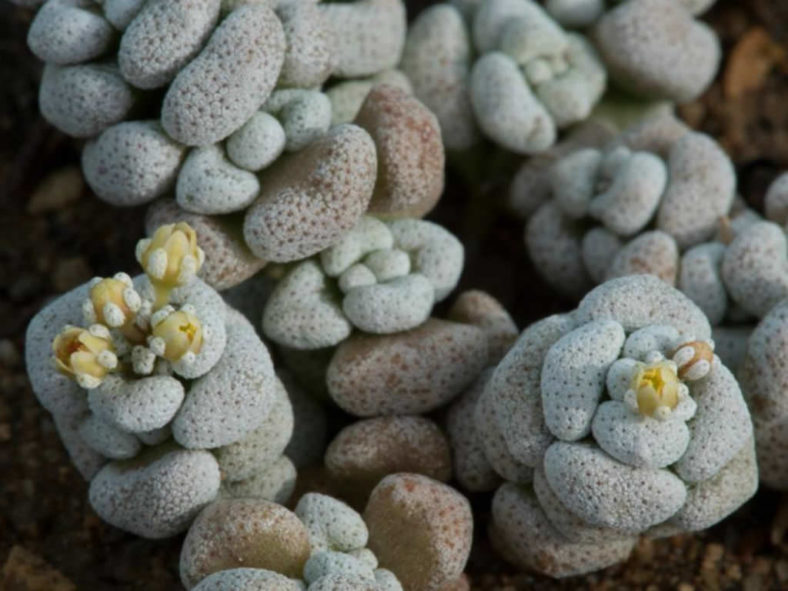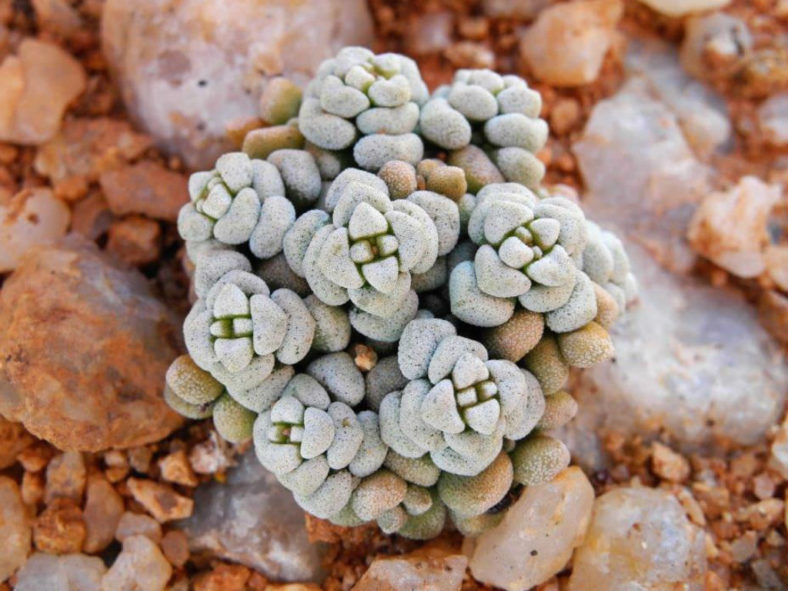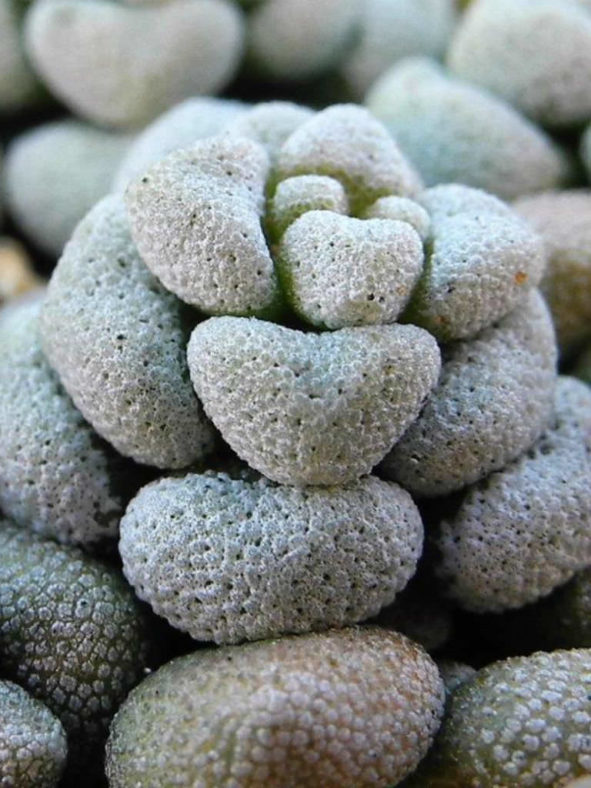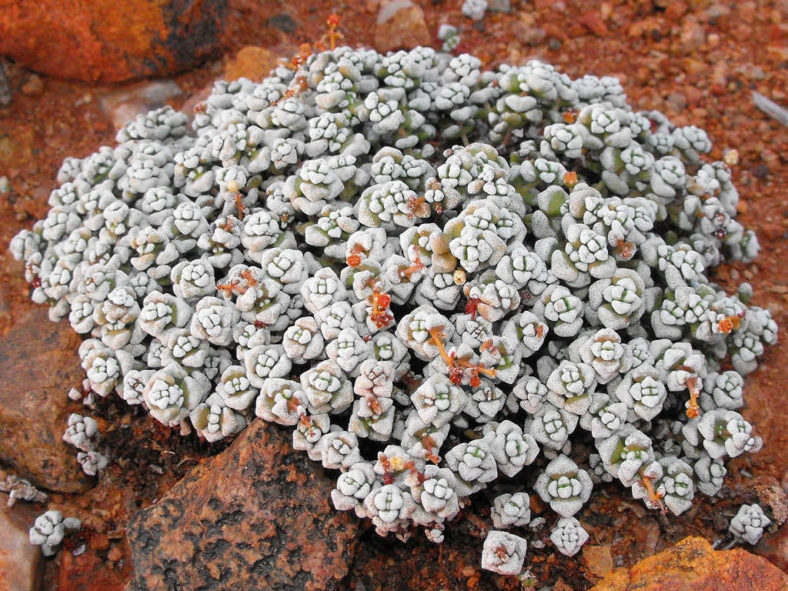Scientific Name
Crassula corallina subsp. macrorrhiza Toelken
Synonym(s)
Creusa corallina subsp. macrorrhiza
Scientific Classification
Family: Crassulaceae
Subfamily: Crassuloideae
Genus: Crassula
Etymology
The subspecific epithet "macrorrhiza" (pronounced mak-roh-RY-zuh) means "large root" and refers to the tuberous root of this subspecies.
Origin
Crassula corallina subsp. macrorrhiza is native to southern Namibia and South Africa (Northern Cape).
Description
Crassula corallina subsp. macrorrhiza is a small succulent with a tuberous main root and short, erect, or longer decumbent or prostrate branches. The tuber can reach a diameter of 0.5 inches (1.3 cm). The leaves are gray-green to gray-brown with a white waxy coating, usually with a rounded tip, and can measure up to 0.2 inches (0.5 cm) long.
The small, star-shaped flowers are creamy-white or yellow and appear in short panicles from spring to mid-summer.

How to Grow and Care for Crassula corallina subsp. macrorrhiza
Light: Crassula plants prefer full sun to partial shade. However, intense afternoon sun in the hottest period of the summer can burn the leaves of the plants. Most Crassulas can be grown indoors if given enough light.
Soil: They are not particular about soil pH, but Crassulas require very porous soil with excellent drainage.
Hardiness: Crassula corallina subsp. macrorrhiza can withstand temperatures as low as 30 to 50 °F (-1.1 to 10 °C), USDA hardiness zones 10a to 11b.
Watering: These plants have typical watering needs for succulents. Avoid overwatering using the "soak and dry" method, where the soil is soaked with water, slowly drained, and left to dry out before watering again. Reduce watering in winter.
Fertilizing: Crassulas will benefit from a small amount of organic fertilizer in mid-spring when they start actively growing.
Repotting: Repot as needed, preferably in spring, at the beginning of active growth.
Propagation: Crassulas are generally started by leaves or stem cuttings. They can also be grown from seeds and offsets.
Learn more at How to Grow and Care for Crassula.
Toxicity of Crassula corallina subsp. macrorrhiza
Crassula plants are generally nontoxic to people and pets.
Links
- Back to genus Crassula
- Succupedia: Browse succulents by Scientific Name, Common Name, Genus, Family, USDA Hardiness Zone, Origin, or cacti by Genus
Photo Gallery
Click on a photo to see a larger version.


